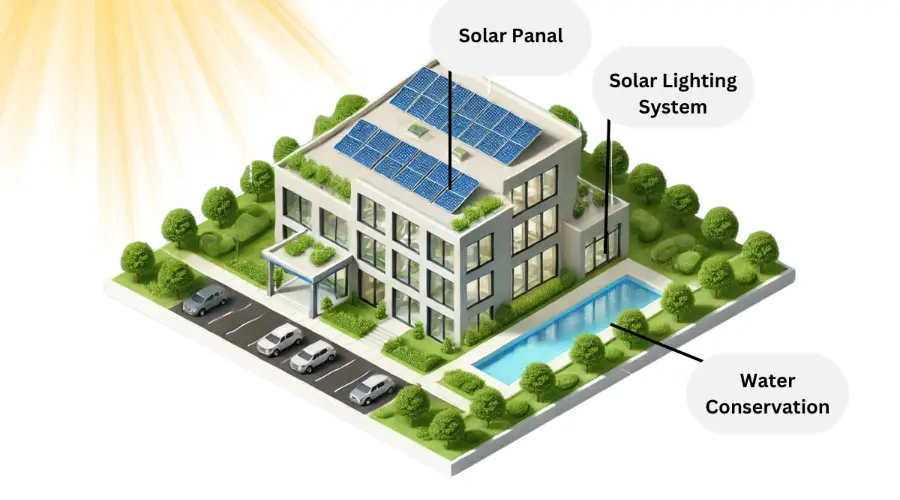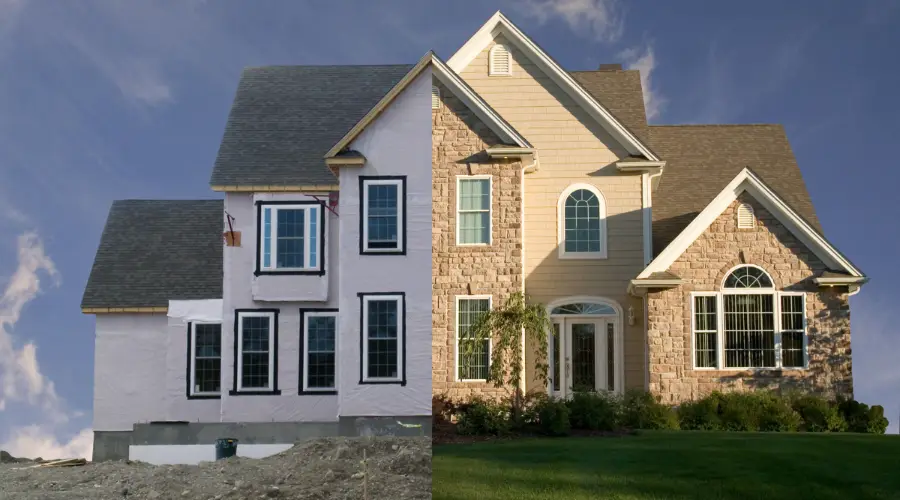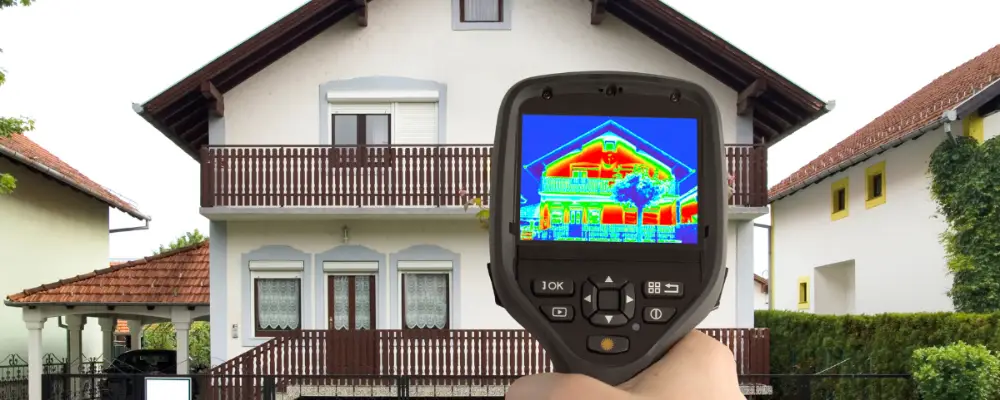Thermal loads are considered the amount of heat energy that a building absorbs and releases depending on the surrounding environmental factors. The structure uses a variety of surfaces, including the walls, windows, and roofs, to absorb and distribute energy. If a building has to sustain itself for long periods, then it can improve energy efficiency and manage thermal loads effectively.
The operating costs of the building can be raised due to poor thermal load considerations, which lead to excessive use of energy. The people who live in the building might find this uncomfortable. To get a clear idea, you can go through the significance, types, calculations, factors affecting, and other methods to resolve thermal loads on buildings as discussed in detail.
What is Thermal Load?
The thermal load determines the energy required to balance the heating or cooling effect of the building. Selecting the appropriate HVAC system is crucial for maintaining this effect.
You can more efficiently use solar and wind energy to illuminate your building, heat and cool it passively, ventilate, and ventilate, and design efficient HVAC systems if you know the thermal loads related to the structure and its intended usage. It is possible to harness on-site resources, which would otherwise contribute to thermal loads, to generate energy instead.
Importance of Thermal Load in Construction

Thermal loads play a crucial role in impacting a building’s energy consumption, comfort, and long-term sustainability. The heat that enters and exits the building results from external and internal heat sources like sunlight, climatic variations, and temperature fluctuations. Handling these factors is essential for several reasons, as mentioned below:
- Cost savings and energy efficiency
The usage of energy is highly affected by thermal loads. The efficient design properties of the building structure can reduce the demand for appropriate heating and cooling of structures by installing the roofs, windows, and walls in the right places. Due to this, the structure is sustainable and reduces the cost overrun for energy management systems.
- Comfort of Occupants
When a building’s occupants are thermally comfortable, they never experience extremes of heat or cold while they are inside. Poor conditions like overheating in the summer or overcooling in the winter could result from improper temperature control. Through efficient thermal load management, excessive heat and excessive air conditioning issues are eliminated.
- Structure Integrity
Thermal loads impact the building’s construction as well. Concrete and steel, for example, expand and contract in response to temperature changes, which over time may produce cracks or other damage. Designs must account for the reality that high temperatures can weaken materials to maintain structural strength.
- Thermal Load Optimization for Green Building Certifications
Efficient thermal load management is necessary to lower energy consumption and greenhouse gas emissions. Buildings that efficiently manage thermal loads can earn certifications like LEED or BREEAM, which promote sustainability by reducing the need for heating and cooling and the environmental harm they cause.
- Adjusting to the Changing Climate
Managing thermal loads becomes ever more crucial as climate change causes temperatures to become increasingly extreme. To prevent using more energy, buildings must adjust to these temperature changes. Buildings can remain efficient and comfortable with properly optimised thermal loads, particularly in areas with harsh weather.
- Complying with regulations
Strict construction codes that establish requirements for thermal performance are now in place in many areas. Proper thermal load management ensures that buildings adhere to insulation and energy efficiency criteria, preventing fines and guarantees that the building satisfies energy standards.
What are the Types of Thermal Load in Construction?
The following categories of thermal loads are illustrated with basic examples:
- The heat from sunshine entering a structure is known as solar heat gain. The size, direction, shade, and glazing of the window all affect it. Large windows facing south, for instance, might increase a building’s summertime temperature and necessitate more cooling.
- Internal heat gain refers to heat generated within a structure by equipment, humans, and illumination. A workplace with numerous computers and occupants, for example, produces more heat than an empty storage space.
- The amount of heat gained or lost as a result of air entering or exiting the structure is referred to as air infiltration or exfiltration. A poorly sealed building loses more heat in the winter than one with controlled ventilation, for instance.
- Heat transmission via windows, walls, or air movement is known as conduction and convection load. A well-insulated structure, for example, requires less heating since less heat escapes through the walls.
- The heat absorbed by materials such as stone or concrete is the thermal storage effect. For example, with concrete floors, heat can be absorbed during the daytime and released during the night, thus stabilizing the internal temperatures of the structures.
How to Calculate Thermal Load?
The heat gained or lost in a building that needs to be controlled to maintain pleasant temperatures is referred to as the thermal load. It is computed by evaluating heat transmission via ventilation, internal heat sources, and the building’s construction. Here’s a basic technique:
- Heat Transfer via Windows, Roofs, and Walls
Apply the following formula:
Q = U×A×ΔT
U: Thermal transmittance in W/m²K.
A: Area of surface (in m²).
Δ T: The difference in temperature (in °C) between the interior and exterior.
- Heat Gain from the Sun (Windows)
When sunlight passes through glass, the heat is:
Q solar = SHGC × A window × S.( 𝑆 𝐻 𝐺 𝐶)
Where:
Q solar: Total heat gain from solar radiation (in Watts).
SHGC: Solar Heat Gain Coefficient (dimensionless), typically ranging from 0 to 1.
A window: Area of the window (in square meters, m²).
S: Intensity of the sun (in Watts per square meter, W/m²).
- Sources of Internal Heat
Include the following contributions:
Approximately 100 W per person.
Appliances: Enter the wattages of the devices.
Lighting: Use the wattage of the bulb.
- Heat from Ventilation
Determine the heat generated by air exchange using the formula:
𝑄 ventilation=1.2×𝑉×Δ𝑇
Where:
Q ventilation: Heat transfer due to ventilation (in Watts).
V: Airflow volume (in cubic meters, m³).
ΔT: Temperature difference between the inside and outside air (in °C).
The heat from ventilation is equal to 1.2 times the airflow volume multiplied by the temperature difference.
The size of the HVAC system is determined by adding up all figures for the total thermal load.
Factors Affecting Thermal Load in Buildings
Thermal load can be affected by many factors that involve internal or external circumstances. The essential things that affect the thermal loads are as follows:
- A building’s energy requirements for heating or cooling are influenced by the direction it faces, which affects how much heat it receives from sunshine.
- The overall heating and cooling needs of the structure are influenced by the local climate, whether it is hot or cold.
- How much heat is lost or kept depends on the insulation and building elements like glass and concrete.
- The kinds and locations of windows, as well as shading mechanisms, can either contribute to excessive heat gain or reduce energy use.
- The total thermal load of the building is influenced by internal heat sources such as humans, machinery, and lights.
- The amount of heat that enters or leaves the building depends on the rate of air exchange through ventilation or air leaks.
- The thermal load is increased by the building’s use, such as residential or commercial, and the number of occupants.
Methods to Reduce Thermal Load in Construction

Utilising Passive Air Conditioning to Lower Heat Loads
Throughout a building’s life, passive air conditioning uses techniques to lower thermal load without the need for mechanical equipment, saving money and energy. Important techniques consist of:
- Orientation to the Building
A building’s thermal load is affected by the direction it faces. In hotter regions, south-facing facades—especially those composed of glass—can intensify the summer heat. Proper orientation reduces the amount of heat and sunlight a building absorbs.
- Selection of Materials
High thermal mass materials, such as stone or concrete, absorb and hold heat to avoid sharp temperature swings. Conversely, glass can increase thermal load by causing excessive temperature variations since it is a poor insulator.
- Elements of Shading
Block direct sunlight with architectural elements like umbrellas, brise-soleils, or awnings. These can reduce the effects of sunshine while letting in more natural light.
- The Vegetation
Shade-producing and heat-reducing plants, including leafy trees and green roofs, can help cool the building in the summer while allowing sunshine in during winter. Maximising these tactics can significantly enhance a building’s energy efficiency and comfort.
Conclusion
An important consideration in building design is thermal load, this type of load has a direct impact on long-term durability, occupant comfort, and energy efficiency. By understanding the many sources of thermal load, including ventilation, interior heat, and solar radiation, designers can optimise building envelopes for energy savings. Efficient thermal load management decreases reliance on heating and cooling systems, minimising environmental impact and energy costs.
FAQ’s
It refers to techniques for controlling home temperatures naturally without the use of mechanical devices like air conditioners. To improve comfort and energy efficiency, these solutions concentrate on lowering the quantity of heat that enters a building or increasing its capacity to remain coolness.
Thermal loads are considered the amount of heat energy that a building absorbs and releases depending on the surrounding environmental factors.

